Second Term Project : Ganze Sub-County, Kilifi County, Republic of Kenya
Contents
- Evolving the Learnings from the First Term Project - Expansion from a Single Area to Multiple Areas -
- Support Project Outline
- Healthcare Issues for Mothers and Children in Ganze Sub-County, Kilifi County
- Description of Activities and Results - Common to the First Term Project -
- Description of Activities and Results - Evolution of the Second Term Project - New!
- Voice from the Community New!
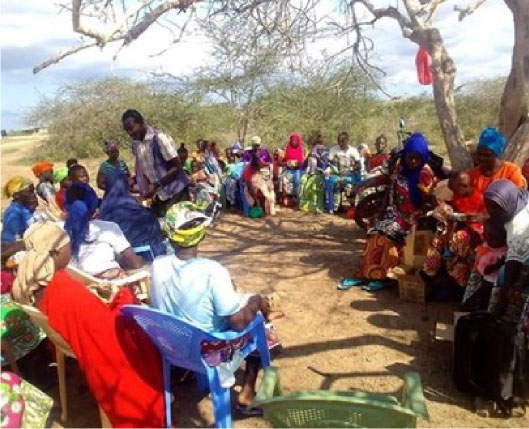
Evolving the Learnings from the First Term Project
- Expansion from a Single Area to Multiple Areas -
As in the First Term Project, the Second Term Project was carried out again together with World Vision Japan in Ganze Sub-County, Kilifi County, the Republic of Kenya, where we implemented activities through three approaches: improving access to maternal and child health, improving nutrition and water, sanitation and hygiene in the community, and strengthening the health system managements. Furthermore, strengthening cooperation between local communities and upper-level hospitals.
Although activities were extended by 9 months due to a prolonged drought at the project site, the project was successfully handed over to the Kilifi Country Government in November 2023 and completed in December 2023.
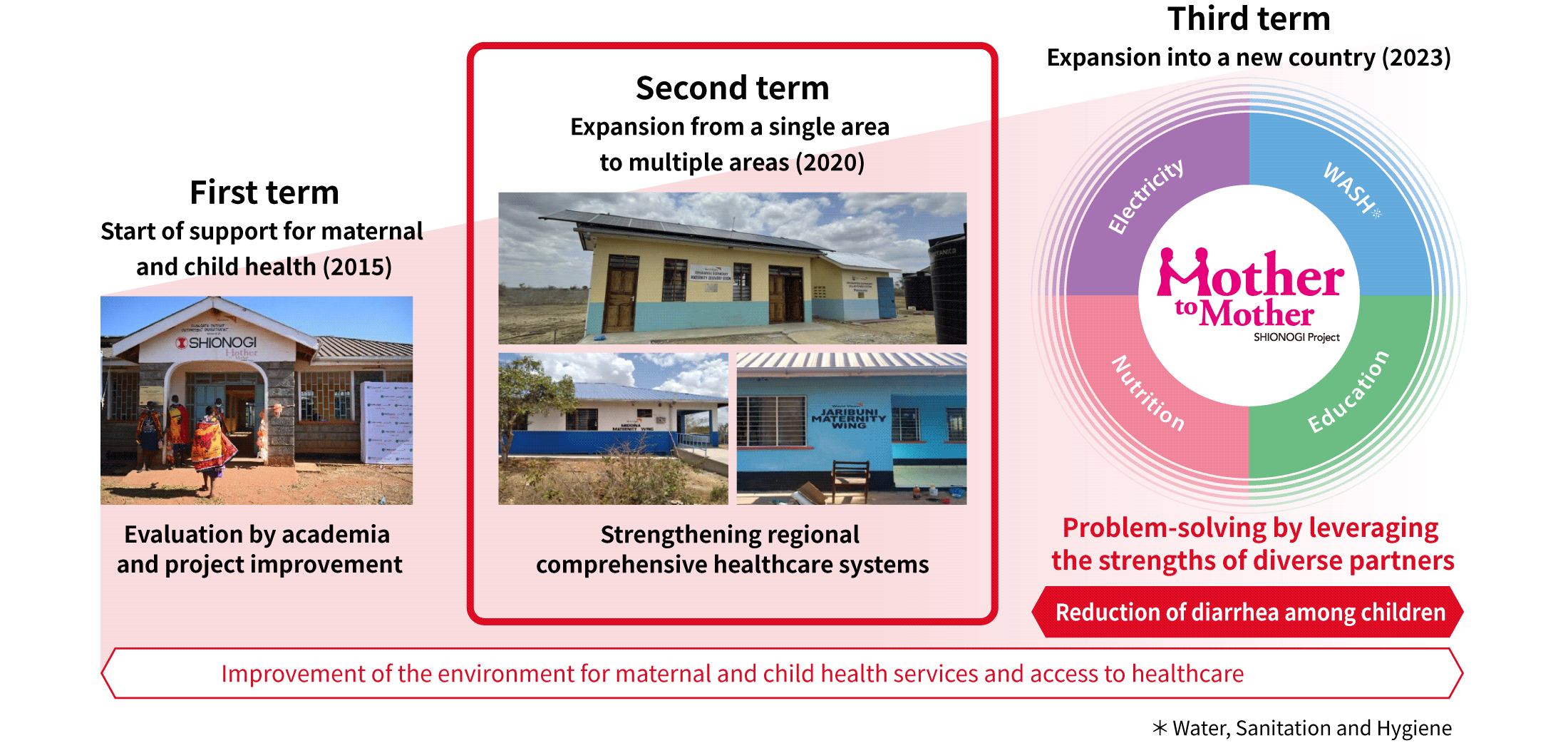
Vision
To develop sustainable communities for the well-being of mothers and children.
Goal
Improving health of pregnant and breastfeeding women and health of children under 5 years of age.
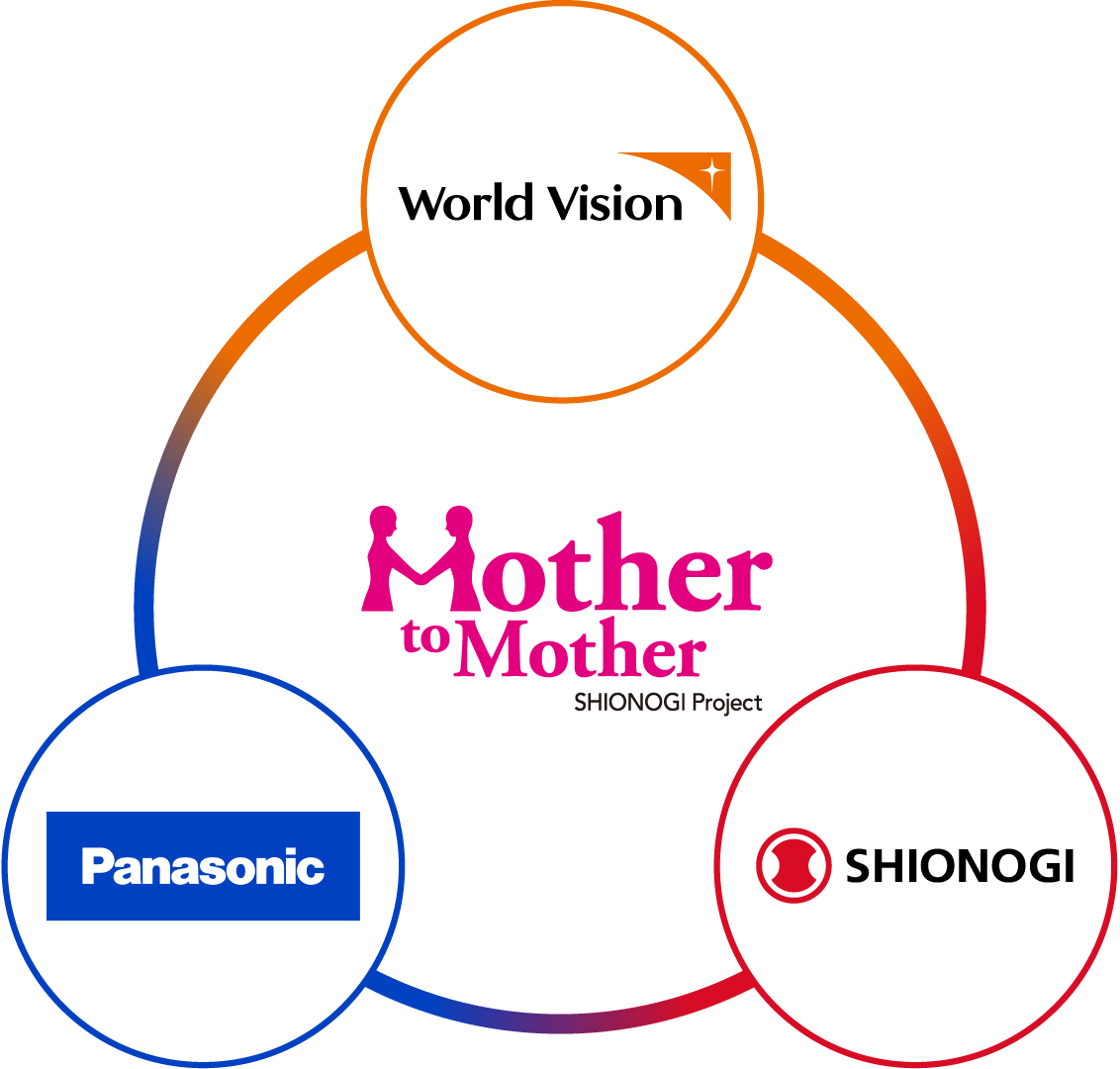
Thanks to Panasonic Holdings Corporation's support in supplying electricity to dispensaries and other facilities, the quality of medical services has improved significantly.
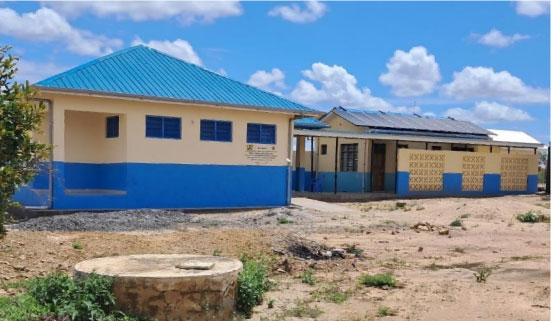
Support Project Outline
| Location | Bamba and Jaribuni, Ganze Sub-County, Kilifi County, Republic of Kenya |
|---|---|
| Target population | 77,506 (direct beneficiaries: 28,196; indirect beneficiaries: 49,310) |
| Term | April 2020 to March 2023 (three years) April 2023 to December 2023 (Extended due to the drought) |
| Budget | 187 million yen |
| Partner | World Vision Japan (a specified non-profit corporation) |
Project Location
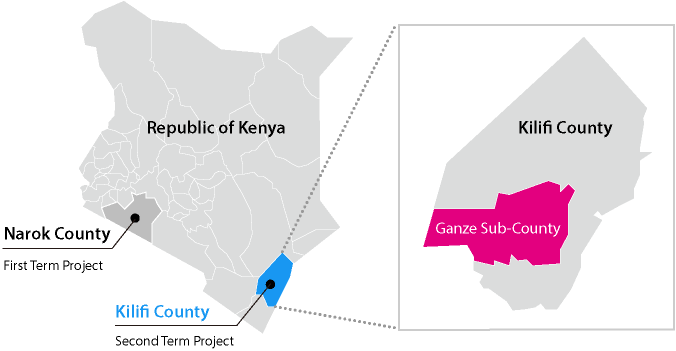
Healthcare Issues for Mothers and Children in Ganze Sub-County, Kilifi County
Limited access to health services
People who have no health facilities within 5 km from home
Over60%
Shortage of healthcare workers and their skills
# of nurse at a local health facility
1or2
Limited access to safe and clean water
Usage rate of improved sanitation facilities
5%
Lack of knowledge of local residents, drought and the consequent water shortage, and difficulties cultivating crops
High poverty rate
46.4%
Insufficient commitment of the County (health budget/cooperation)
Percentage of the County budget allocated to health and nutrition
26%
Only one nurse for 6 to 10 deliveries per month and with 600 outpatients per month.
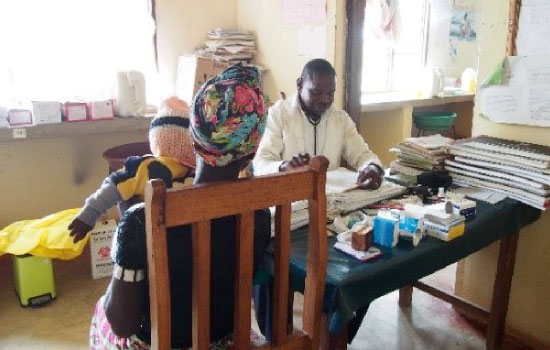
The construction of a maternity ward, started by the local community, has been suspended.
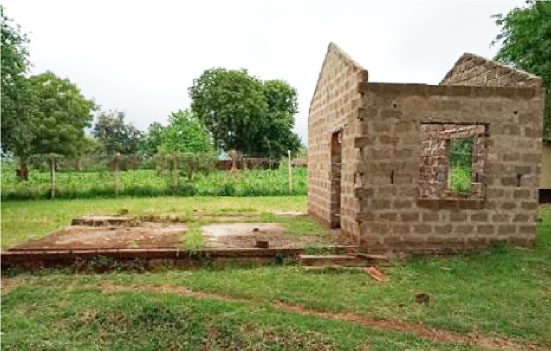
Table 1: Health data (reference values)
| Indicator | Kenya*1 | Bamba*2 | Jaribuni*2 |
|---|---|---|---|
| Population | 52 million | 42,000 | 34,000 |
| Antenatal care coverage (four or more times) | 57.6% | 44.1% | 23.3% |
| Birth attended by skilled health personnel/Deliveries at health facilities | 61.2% | 77.5% | 15.4% |
| Full vaccination coverage | 74.9% | 75.0% | 50.3% |
| Incidence of diarrhea | 15.2% | 27.6%*3 | - |
| Incidence of malaria | 8.0% | 22.9% | 35.7% |
| Access to improved water | Nairobi:83.7% | 18.7% | - |
Data in Table 1 is for reference only. Since the data are from different information sources, the figures should not be used for comparison.
*1 Kenya Demographic Health Survey 2014
*2 Kilifi CIDP 2018-2022
*3 World Vision Survey 2013
Description of Activities and Results
- Common to the First Term Project -
1. Improved Access to Maternal and Child Healthcare Services
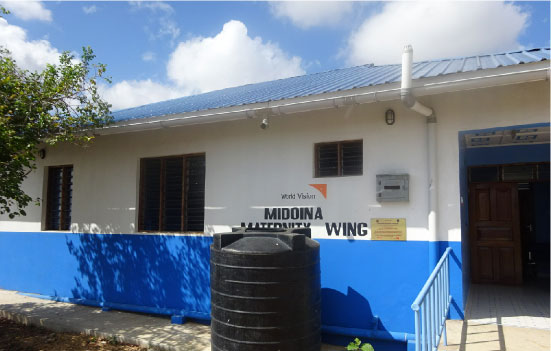
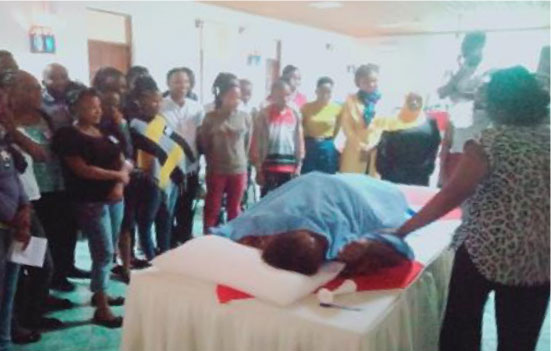
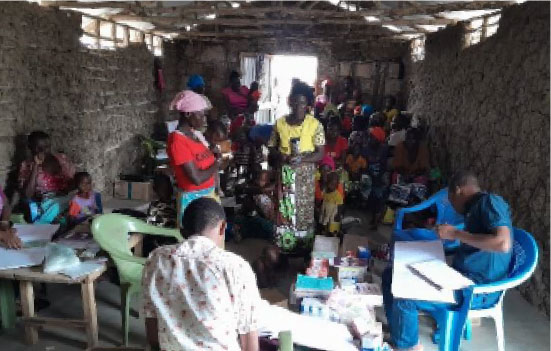
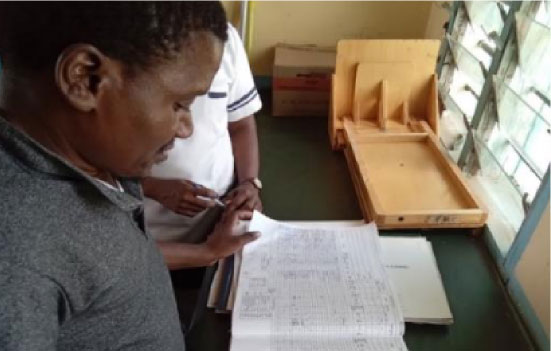
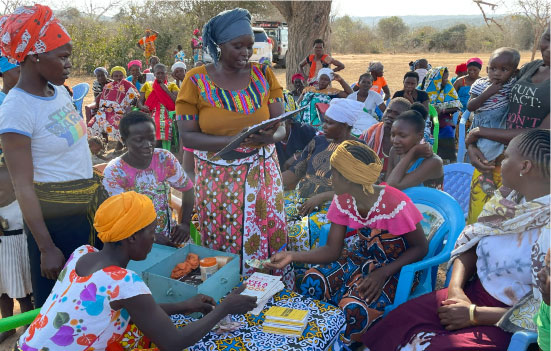
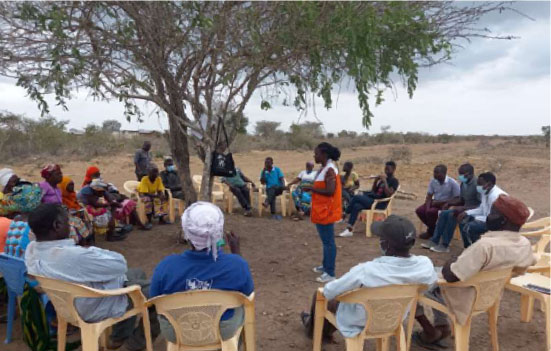
Percentage of pregnant women who received antenatal care (four or more times)
61% → 77%
Percentage of births attended by skilled birth attendants/deliveries at health facilities
82% → 91%
Percentage of mothers who received postnatal care within 24 hours of delivery
75% → 98%
Percentage of children 12-23 months who received full vaccination
21% → 81%
Increase in Access of Maternal and Child Health Services Through the Project
Visitors to each dispensary increased by 3.7 times since the start of the project, showing increased access to maternal and child health services.
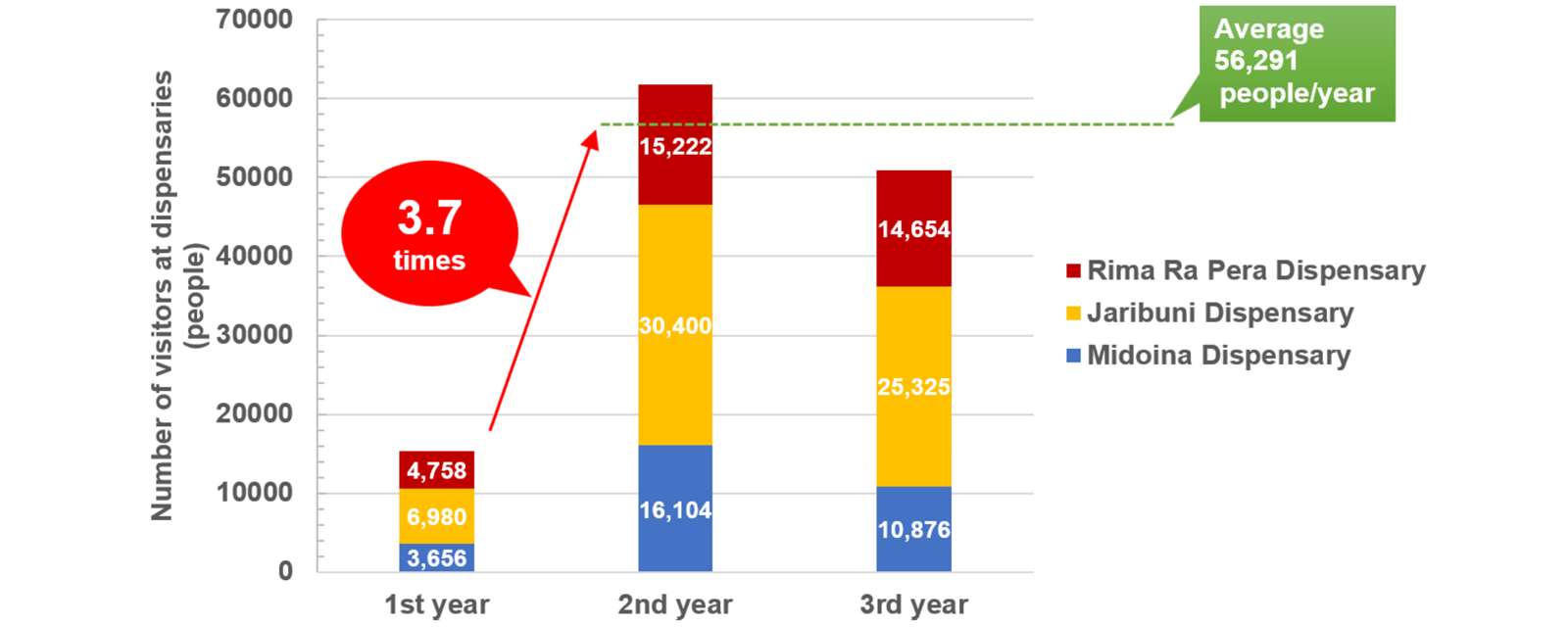
2. Improving Nutrition and Water, Sanitation and Hygiene in the Community
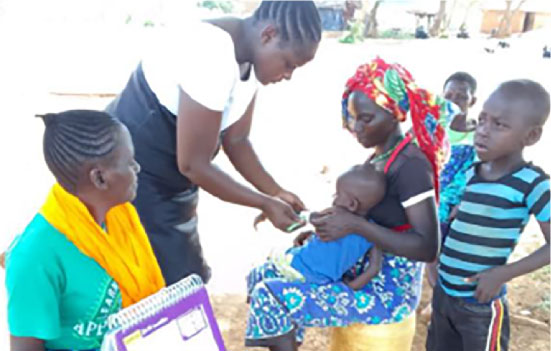
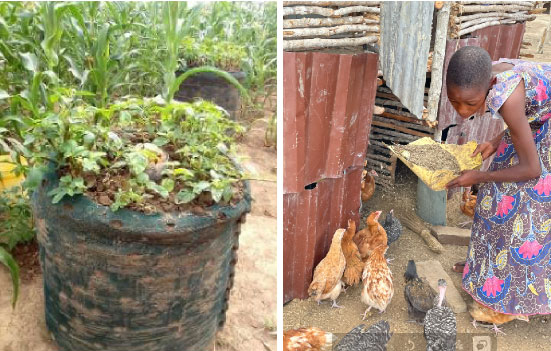
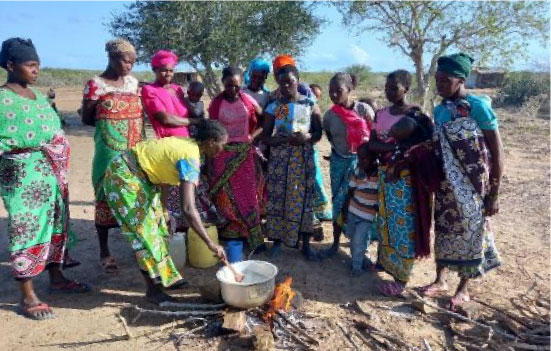
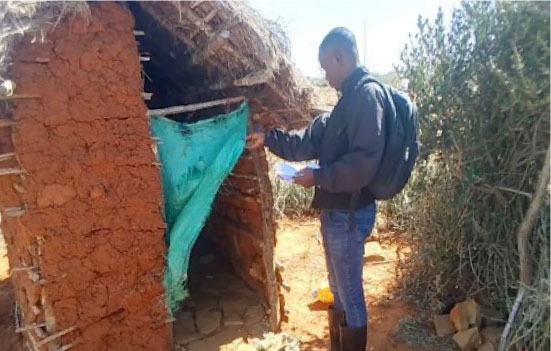
Recovery rate of acutely malnourished children under 5 years of age
70% → 56%*
Percentage of exclusive breastfeeding for 6 months
63% → 64%*
Number of people who were vaccinated against COVID-19
3,705People
Number of villages certified as open defecation free
9 out of 10 villages achieved
All figures as of March 2023
* The continued drought since 2021 had a negative impact on people's lives and activities.
3. Strengthening the Health System
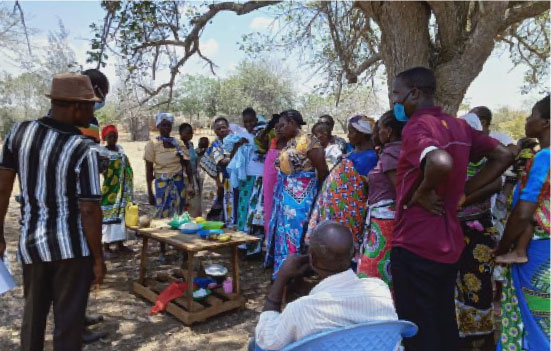
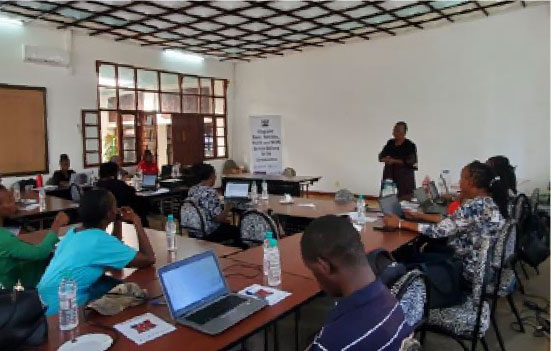
† Reproductive Maternal, Newborn, Child and Adolescent Health and Nutrition (RMNCAH-N) indicators: Major impact indicators in maternal and child health
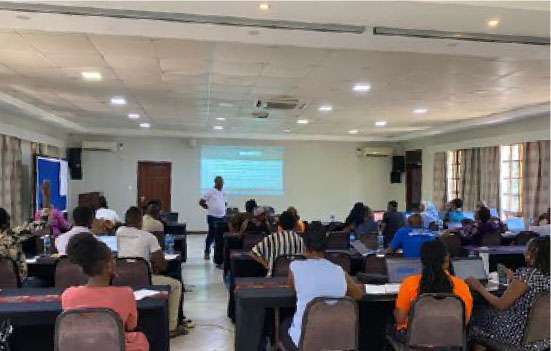
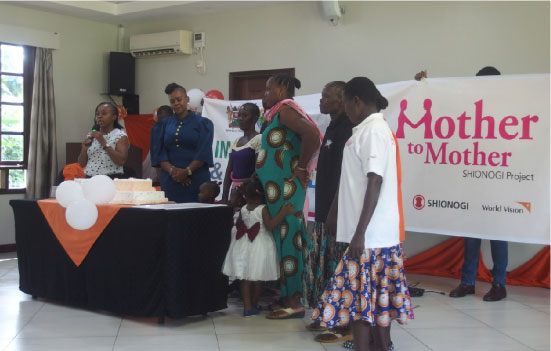
Number of recommendation submitted by the advocacy group that was reflected in policies and guidelines
0 → 1Item
Percentage of county budget allocated to health and nutrition in the County Government
26% → 16%*
All figures as of March 2023
* The continued drought since 2021 led to the County's emergency relief and budget adjustment allocated to health and nutrition.
Through the three-year project, health facilities were well-equipped and health services improved. Furthermore, training and awareness-raising activities improved the community's knowledge of health and nutrition, leading to changes in the behavior of local people.
Description of Activities and Results
- Evolution of the Second Term Project -
1. Improved the Quality of Medical Services (Collaboration with Panasonic Holdings Corporation)
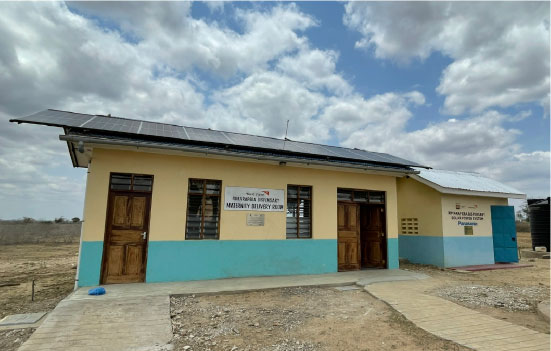
Left: Refrigerator powered by electricity generated by the solar panels
Right: Inside the energy storage building where the batteries and panels are installed
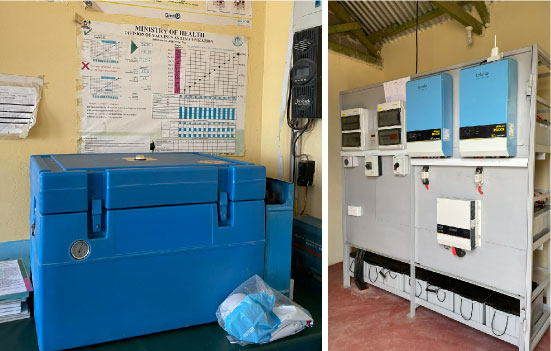
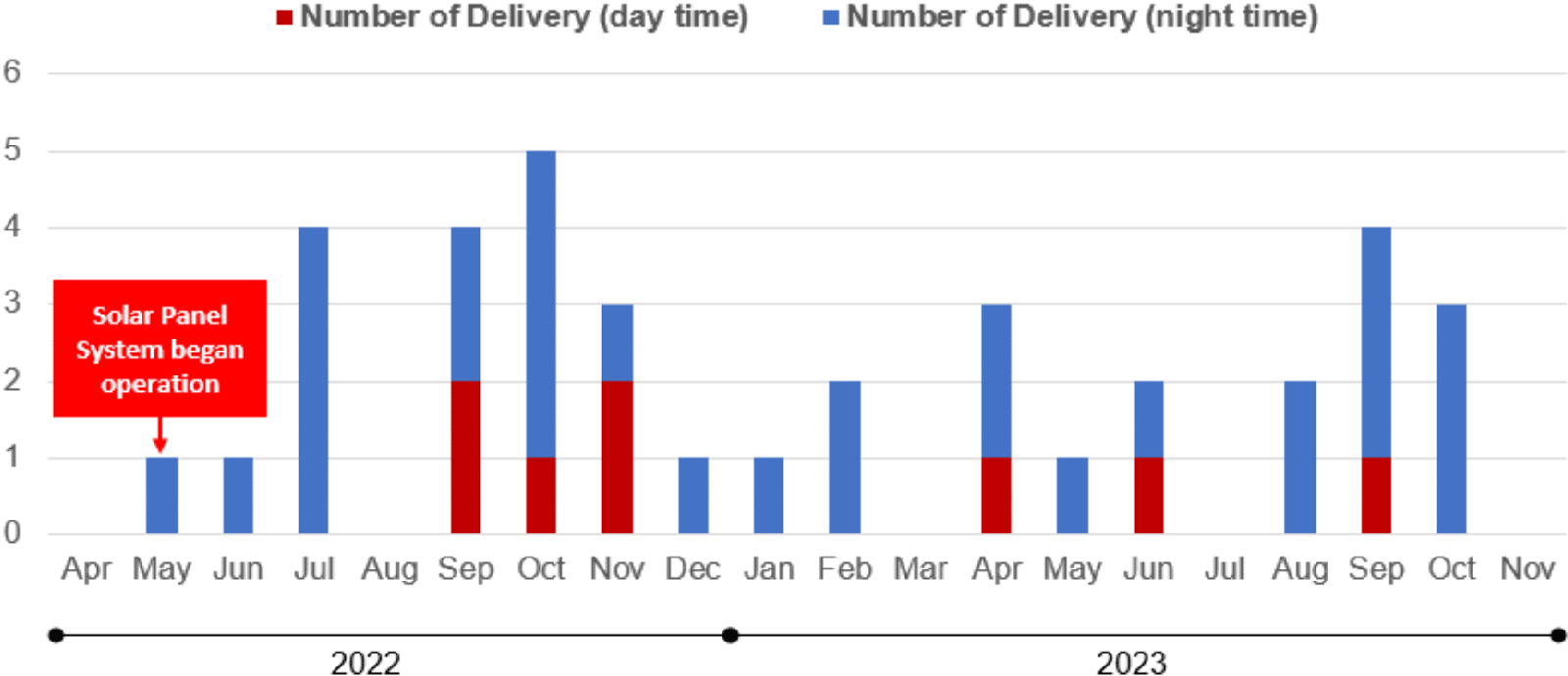
Voice from the community
We are grateful for Panasonic's support in installing a solar power generation system that has brought light to our clinic.
Previously, the dispensary was dark and it was difficult to respond to deliveries and emergencies. Now that we have electricity, we can receive services 24 hours a day.
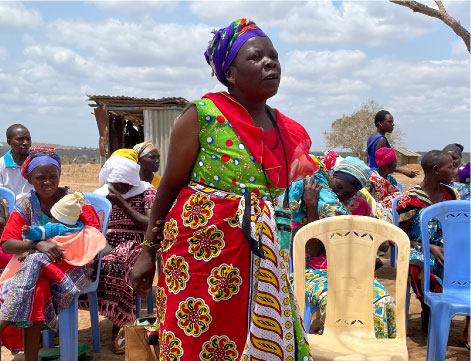
2. Strengthening the Regional Comprehensive Healthcare System
To improve the quality of services provided by the health facilities, the project supported to establish a system for regular coordination and guidance from upper-level health facilities and the Ministry of Health to clinic staff at the three dispensaries, and strengthened the referral system*.
In addition, the three dispensaries showed significant improvements in drug demand forecasting, inventory management and storage conditions.
Furthermore, electricity facilities were installed not only at the dispensaries but also at upper-level hospitals, leading to the strengthening of the regional comprehensive healthcare system.
* A coordination system for introducing and transporting patients who cannot be dealt with at lower-level health facilities to upper-level health facilities.
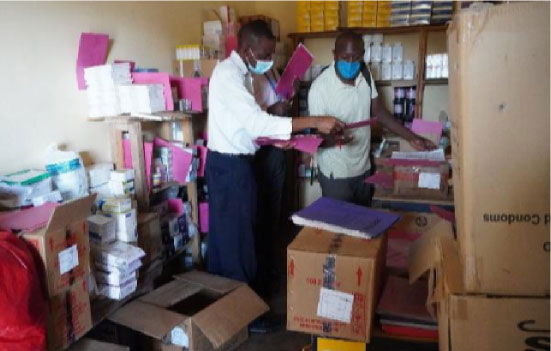
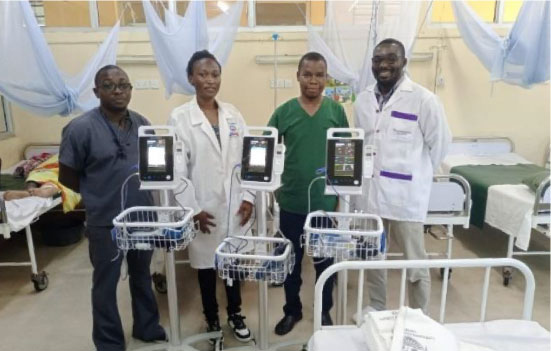
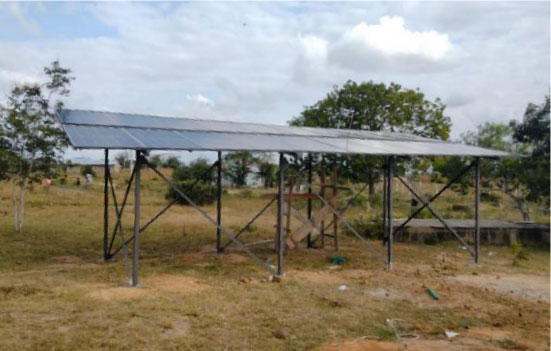
3. Continuous Follow-up and Recovery of Malnourished Children in Year 3 Extension Period
In Kenya, prolonged drought that began in late 2020 has exacerbated nutritional problems, leading to the need for emergency food aid and so on.
The number of malnourished children increased in the target area and we decided to extend the project period by 9 months. Children diagnosed as malnourished were provided with supplementary foods and necessary follow-up.
During the Year 3 Extension Period, 379 children were diagnosed as malnourished, of which 114 have recovered.
When emergency food assistance was provided by the government, household data collected through visits by Community Health Volunteers in this project contributed to delivering food and supplies to people in need.

Voice from the Community
Mother to Mother* group member in Marere
I used to give solid food to children as young as 2 weeks old, but since I joined the project, I've changed that habit. I breastfeed for at least 5 minutes on each side, and I breastfeed exclusively for up to 6 months.
After 6 months, I make baby food and feed it in the morning and at night. Children seem to be getting less sick than before.
* A system in which mothers form groups in each area to teach each other about maternal and child health and nutrition (peer education)
Nurse at Jaribuni Dispensary
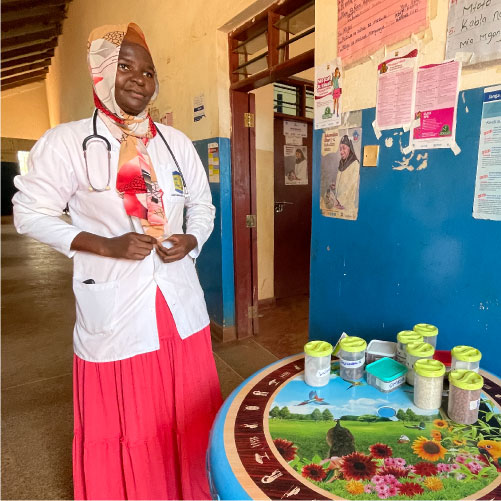
Ibrahim Juma Kistao (Advocacy Group Chairman in Rima Ra Pera)
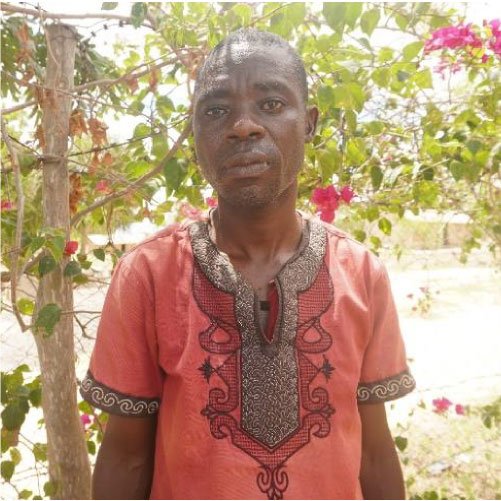
I live in Rima Ra Pera with my wife and seven children.
My wife is a member of a Mother to Mother group. Since she joined the group a few months ago, she managed to get her youngest child (18 months old) vaccinated without my assistance. She says she learned about child nutrition, growth, and the importance of immunization at the Mother to Mother group with 14 other mothers. She also got accurate information about family planning, and stopped believing the false rumor that family planning was about discouraging people from having children. My wife also received training in poultry farming through the group and was provided with 10 chickens.
In January 2021, I heard that a community advocacy group was going to be formed and I became the leader of that group. My role is to raise awareness of the importance of maternal and child health services and the use of health facilities in the community. Our advocacy group made a suggestion to the local health facility about the waiting time and it was reflected and now efforts are being made to reduce the waiting time at the facility. I am happy to know that we can contribute to make a positive change for the health facility. We will continue to communicate with the local government and pursue adequate funding to be allocated for improvement of health facility.
Jacob Mwangi (Medical Laboratory Coordinator in Ganze Sub-County)
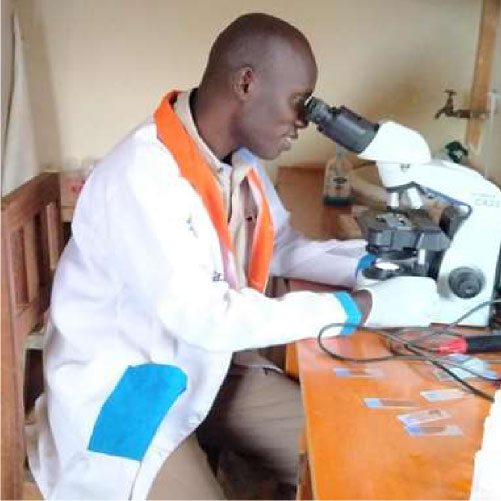
Before the Mother to Mother project began, there were only 3 clinical laboratories and 5 laboratory technicians in Ganze Sub-County. With limited equipment and supplies, it was a challenge to provide prenatal cares for all pregnant women in the area.
The project has provided us with microscopes and other laboratory equipment, allowing us to provide more advanced health services. We are very grateful for your support.
Mugalla Mvurya, Nutrition Coordinator, Ganze Sub-County
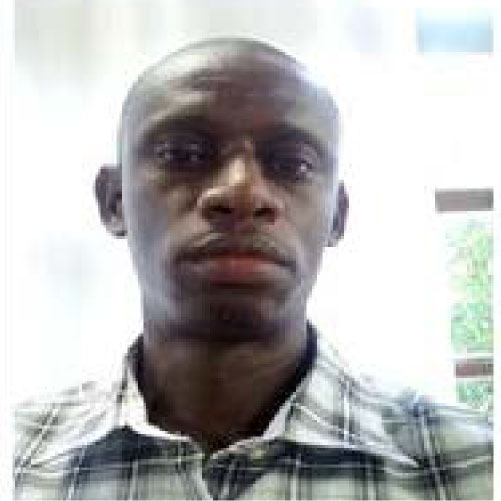
I have been the Nutrition Coordinator of Ganze Sub-County for 3 years. I oversee the overall nutrition services in the Sub-County and am responsible for coordinating activities and nutrition advocacy.
I have been involved in the Mother to Mother Project since July 2020 and am responsible for planning, implementing and monitoring nutrition-related activities.
In Jaribuni and Bamba wards, there has been a significant change among the community members. In addition, the improvement of nutrition for malnourished children, the training of personnel involved in BFCI*, and the training in home gardening and livestock rearing have had a positive impact on the lives of many people and provided emotional support. Since the start of the Mother to Mother project, our nutrition program has also greatly improved and the following nutrition indicators have shown signs of improvement.
* Baby Friendly Community Initiative (BFCI): a health and nutrition improvement program aimed to improve the health and nutritional status of communities. BFCI includes the provision of postnatal lactation support in communities to encourage breastfeeding, and is used in maternal and child health activities in many developing countries.

